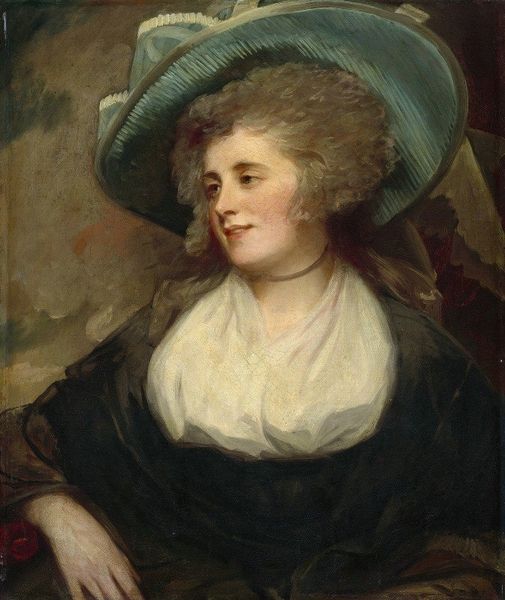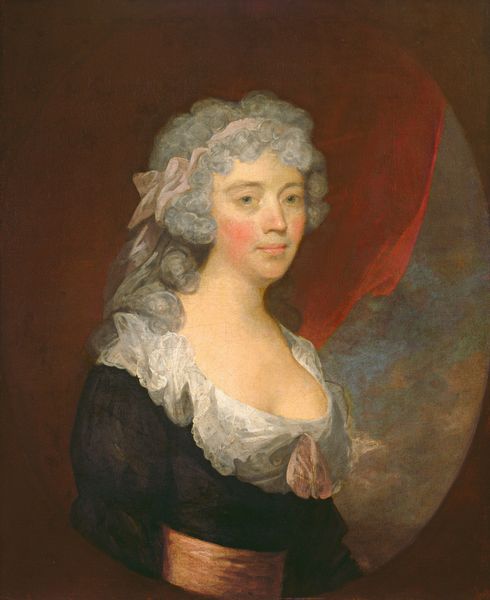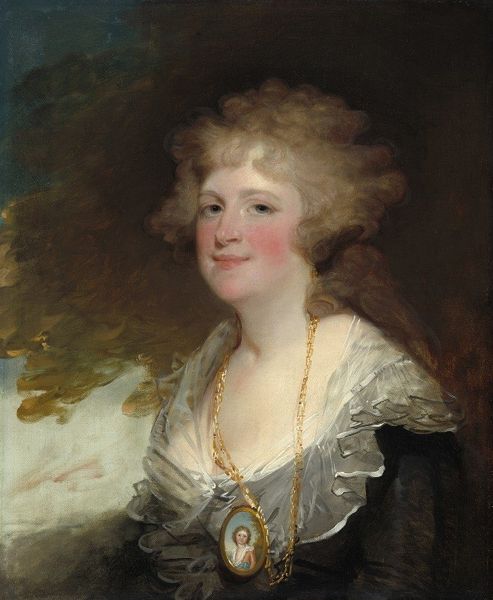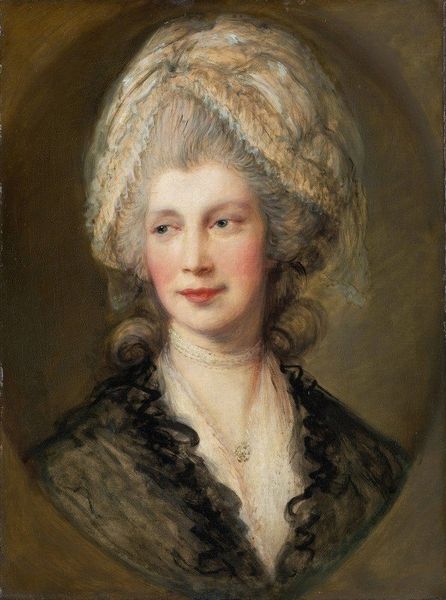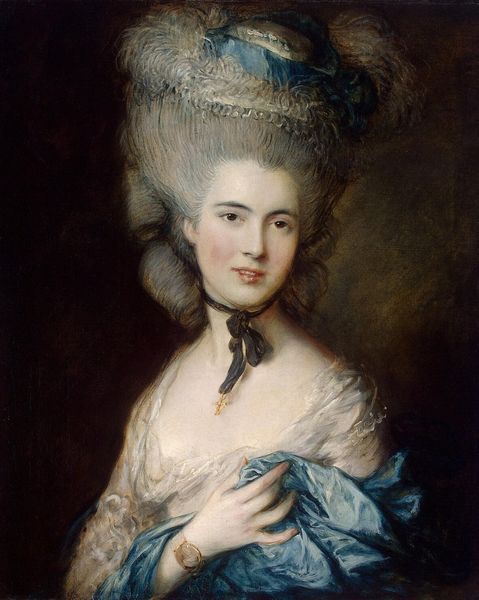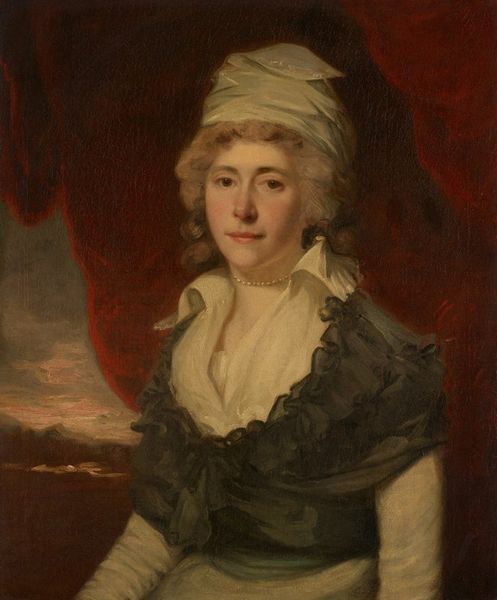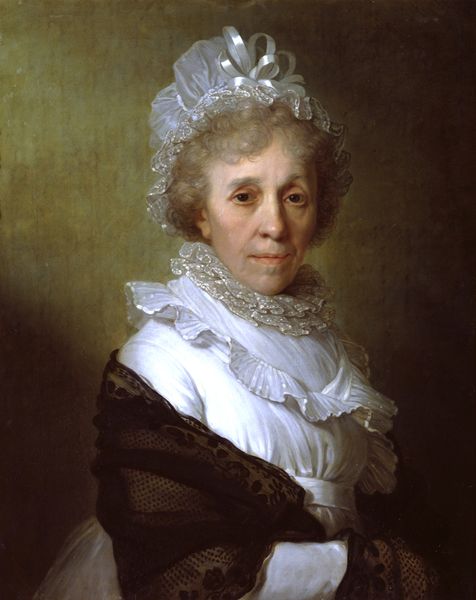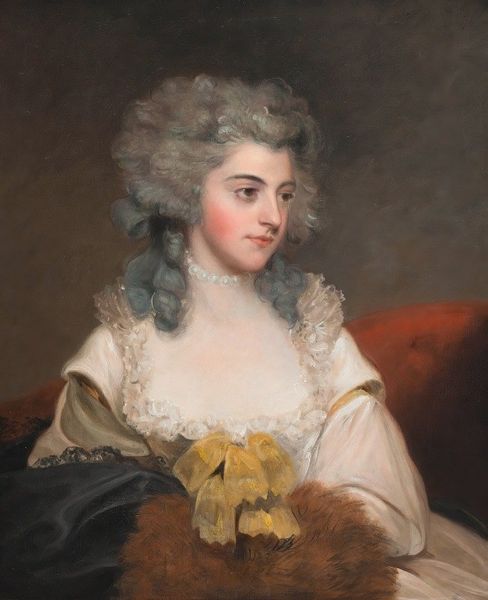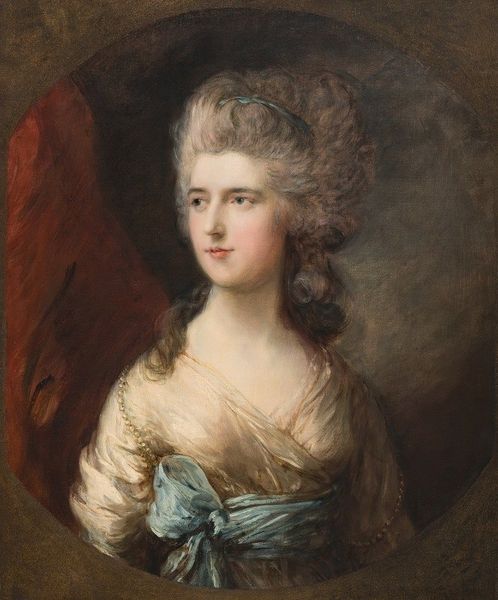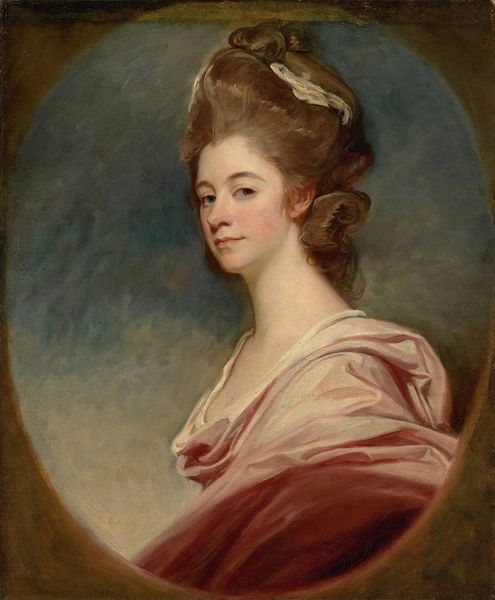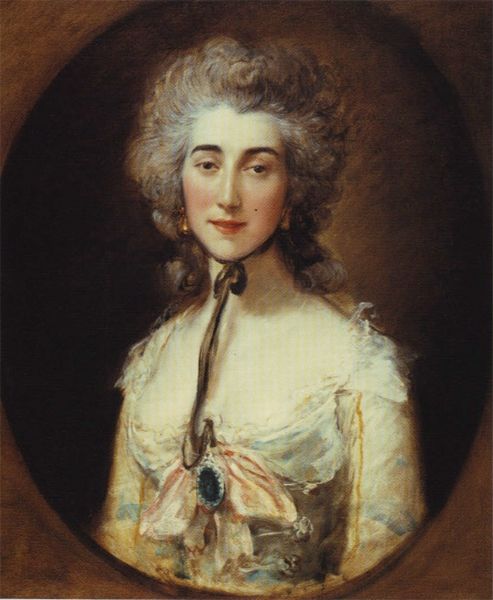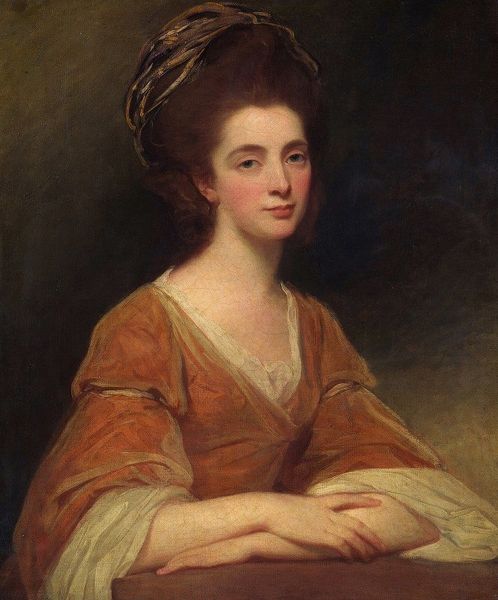
painting, oil-paint, oil-on-canvas
#
portrait
#
painting
#
oil-paint
#
romanticism
#
genre-painting
#
oil-on-canvas
Dimensions: 30 1/16 × 25 1/16 in. (76.4 × 63.6 cm)
Copyright: Public Domain
Curator: Look at this canvas, “Mrs. Allan Maconochie,” crafted in 1789 by James Northcote, presently residing here at the Art Institute of Chicago. What captures your attention first? Editor: The ribbons! Such elaborate ornamentation suggests an immense cultural emphasis on the spectacle of dress. What did these textiles communicate to contemporary viewers? Curator: Indeed. Notice the layers – from the sheer frills cascading from her bonnet to the delicate lace trimming her dark dress. These fabrics are testaments to production—spinning, weaving, embellishing. We see not only the finished product but echoes of the labor that brought it into existence. Consider the cotton for her scarf or the dye needed for her dress. What resources were needed? What trade networks supported this single image? Editor: Absolutely, and on another symbolic note, consider that Northcote, known for his interest in physiognomy, here gives us Mrs. Maconochie with an expression that is thoughtful, self-possessed even, not merely decorative. I’m drawn to that juxtaposition between personal introspection and this highly ornamented appearance. Curator: Perhaps it's a conscious balancing act. These portraits often perform a delicate negotiation between conveying social standing and the sitter's internal character. One cannot escape the labor involved, from its artistic creation in oils to its position in society’s system of appearances. Oil paint itself provides a lens onto 18th century material possibilities, allowing such layered texture and depth to emerge. Editor: Thinking of those oil paints, notice how the artist's handling of light and shadow seems almost calculated to imbue the painting with psychological weight, the darker areas setting off her pale skin. The chiaroscuro enhances the image's symbolic value, lending gravity. Curator: I agree. By examining its materials and the economic realities underlying this romantic painting we find a very human and very concrete story woven into the fabric – quite literally! – of the artwork itself. Editor: Indeed. This is more than a pretty picture. It serves as a layered expression of class, cultural identity, and even perhaps personal psychology.
Comments
No comments
Be the first to comment and join the conversation on the ultimate creative platform.
